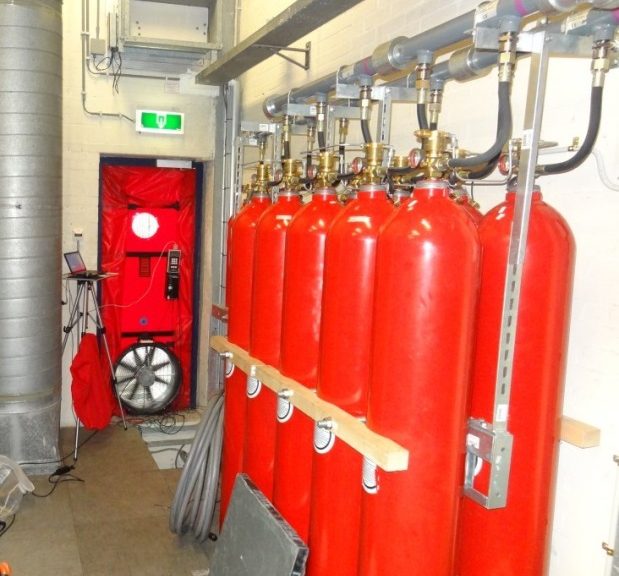
Room Integrity Testing Terminology
Room Integrity Testing Terminology
A gaseous fire suppression system is a highly effective method of protecting your server rooms etc. from fire. To ensure it works properly, it is important that room integrity testing is carried out when the system is first installed and thereafter at least once a year to ensure the protected area remains adequately sealed; unfortunately, this is often overlooked by the building management.
Room integrity testing checks whether the server room or enclosure – where the fire suppression system has been installed, is adequately sealed.
When undertaking the integrity testing of a new system the company tasked with undertaking the works requires quite a lot of information, which the client often struggles to answer. To try and help with this we have tried to explain the differences between a Descending Interface, Continual Mixing and Extended Discharge.
What is a Descending Interface?
The fire retardant agent is discharged from the ceiling –highest point) into the protected enclosure. An ‘interface’ with a constant concentration – known as the Initial Concentration) descends from the discharge level as gas leaves escapes from the enclosure via air leakage paths. The time it takes for this ‘interface’ to reach the minimum protected height such as the top of the server racks is defined as the Hold time. The time retention time for a Room Integrity Test Pass is usually set at 10 minutes.
What is Continual Mixing?
The suppressant Agent is discharged at near-ceiling level into the enclosure, thereafter fans circulate gas throughout the room, resulting in a uniform agent concentration. This concentration begins at initial concentration and lowers until it eventually reaches a specified minimum concentration. The time it takes for the initial concentration to reach the minimum concentration is defined as the hold time.
What is an Extended Discharge?
Typically extended discharges consist of an initial discharge for 10 to 60 seconds to get the concentration up to the design concentration. Then the extended discharge will continue at a lesser rate. The intention is for the extended discharge to replace the agent that leaks out of the room. It is assumed that the extended discharge will create enough turbulence to create a continual mixing situation throughout the extended discharge period.
We hope the above information has helped you.
If you would like some more information on our Room Integrity Testing services please call 01525 303905 or for more information please visit us at the APT Sound Testing website.